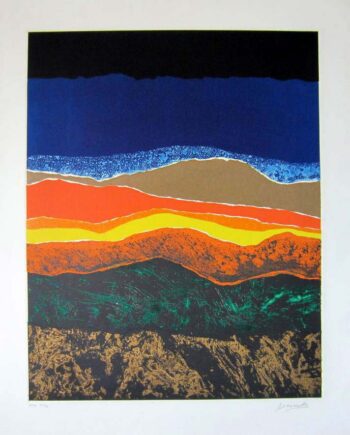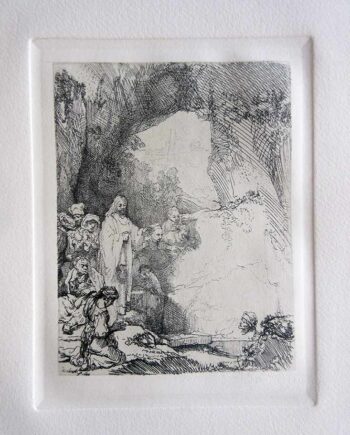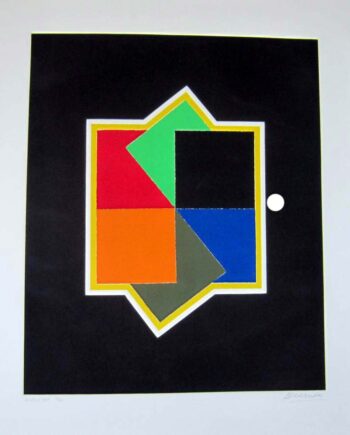Etchings
An Etching is usually a process of using strong acid or mordant to cut into the unprotected parts of a metal surface to create a design in intaglio (incised) in the metal.
The Etching is traditionally the process of using strong acid or mordant to cut into the unprotected parts of a metal surface to create a design in intaglio (incised) in the metal. In regards to the method of printmaking, it is, along with engraving, a most important technique for old master prints, and is still widely in use today.
A pure etching is a metal plate – usually of copper, steel or zinc – is covered with a waxy ground which is resistant to acid. Then the artist scratches off the ground with a pointed etching needle where the artist wants a line to appear in the finished piece, thus exposing the bare metal. The échoppe, a tool with a slanted oval section, is also used for “swelling” lines. The plate is then dipped into a bath of acid, known as the mordant (French for “biting”) or etchant, or has acid washed over it. The acid then bites into the metal to a depth depending on time and acid strength, leaves behind the artist’s drawing carved into the wax on the plate. The ground that remains is then cleaned off the plate. For first and renewed uses the plate is inked in any chosen non-corrosive ink all over and the surface ink drained and wiped clean, leaving ink in the etched forms.
The plate is then put through a high-pressure printing press together with a sheet of paper very often moistened to soften it. The paper then picks up the ink from the etched lines, making a print. The process can be repeated numerous times. Several hundred impressions or copies could again be printed before the plate shows signs of wear. Etchings have often been combined with other intaglio techniques such as engraving.






